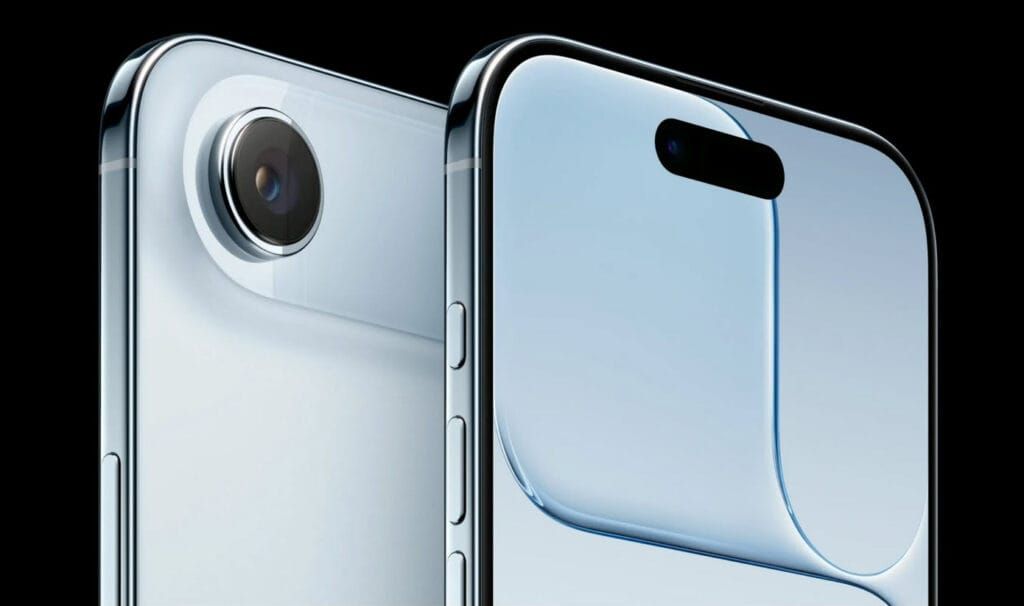Apple followed Samsung’s footsteps and introduced its thinnest, the iPhone Air, a device that redefines the boundaries of smartphone design with its ultra-slim profile and cutting-edge technology. Touted as the thinnest iPhone ever at just 5.6mm, the iPhone Air is 0.2 mm thicker than Samsung’s Galaxy Edge. The air combines sleek aesthetics with powerful performance, setting a new benchmark for what a smartphone can be. Here’s a deep dive into what makes this device a game-changer.
A Design Revolution: Thinner, Lighter, Stronger
The iPhone Air lives up to its name with a breathtakingly slim 5.6mm chassis, making it approximately a third thinner than its predecessor, the iPhone 16. Crafted with a titanium frame and featuring Ceramic Shield 2 glass on both the front and back, Apple claims the iPhone Air is four times more resistant to shattering than previous models, addressing concerns about fragility in ultra-thin designs. The phone’s 6.5-inch Super Retina XDR display with ProMotion technology ensures smooth scrolling and vibrant visuals, reaching a peak brightness of 3,000 nits for stunning outdoor visibility.
Available in five elegant colors—black, white, beige, light blue, and a new mist blue—the iPhone Air evokes a sense of lightness and sophistication. Its rounded edges hark back to earlier iPhone designs, offering a comfortable grip despite its slender form. The rear camera “plateau,” as Apple calls it, integrates seamlessly into the back panel, reducing wobble when the phone is placed on a flat surface, though early hands-on reports note it still attracts fingerprints on the frosted glass finish.
Power Packed in a Slim Package
Don’t let the svelte design fool you—the iPhone Air is a powerhouse. It’s equipped with the A19 Pro chip, boasting an upgraded CPU with more performance cores and a 5-core GPU with AI accelerators, delivering what Apple claims is “MacBook Pro-level performance.” This chip powers everything from intensive gaming to advanced AI-driven features, making the iPhone Air a versatile device for both casual users and professionals.
The iPhone Air also marks a significant milestone for Apple’s in-house silicon ambitions. It features the new N1 wireless connectivity chip, which supports Wi-Fi 7, Bluetooth, and Thread, enhancing features like AirDrop and Personal Hotspot with improved reliability and speed. Additionally, the C1X modem doubles the speed of its predecessor, ensuring faster 5G connectivity, though it lacks support for mmWave frequencies. The device is eSIM-only in select markets, eliminating the physical SIM tray to maintain its slim profile while offering seamless global connectivity through over 500 carriers.
Camera Innovation: Less is More
In a bold move, the iPhone Air sports a single 48-megapixel “Fusion” camera on the rear, a departure from the dual-camera systems found on other iPhone models. This high-resolution sensor, combined with intelligent software enhancements, delivers exceptional photo quality and mimics 2x zoom through sensor cropping, though some users may miss the ultrawide lens for macro shots.
The 24-megapixel front-facing camera introduces Center Stage, a feature that automatically adjusts to keep everyone in the frame during selfies or video calls, enhancing the device’s appeal for content creators and social media enthusiasts.A standout feature is the dual filming mode, which simultaneously captures footage from both the front and rear cameras, perfect for vloggers or anyone wanting to record themselves alongside their surroundings. While the single-lens setup may seem like a compromise, Apple’s software optimizations ensure the iPhone Air’s camera remains a formidable tool for photography and videography.

Battery Life and Accessories: Defying Expectations
One of the biggest concerns with ultra-thin phones is battery life, but Apple has managed to fit a battery that promises all-day usage into the iPhone Air’s slim frame. While some rumors suggested a smaller 2,800mAh battery, Apple’s engineering prowess ensures efficiency, supported by the A19 Pro’s power management and the new Qi 2.2 wireless charging standard, which allows up to 25W wireless charging and 35W wired charging.To complement the iPhone Air, Apple introduced a range of accessories, including a MagSafe case, a reinforced polycarbonate bumper case, and a quirky crossbody strap for those who want to wear their phone like a fashion accessory. A new MagSafe battery pack, priced at $99, is designed exclusively for the iPhone Air, ensuring users can stay powered up without sacrificing the phone’s sleek aesthetic.
iOS 26 and the Liquid Glass Aesthetic
The iPhone Air’s launch coincides with the upcoming release of iOS 26 on September 15, 2025. This new operating system introduces the Liquid Glass design language, characterized by transparent, bubbly navigational elements and icons. While the beta version sparked mixed reactions among users, the final release promises a futuristic, augmented reality-friendly interface that complements the iPhone Air’s sleek hardware. The integration of Apple Intelligence features, though still evolving, hints at a smarter, more intuitive user experience, even if the highly anticipated Siri overhaul remains a work in progress.
Pricing and Availability
The iPhone Air starts at $999, positioning it as a premium yet accessible option in Apple’s lineup, replacing the iPhone 16 Plus. Preorders begin on September 12, with general availability on September 19. The base iPhone 17 starts at $799 with 256GB of storage, while the iPhone 17 Pro and Pro Max are priced at $1,099 and $1,199, respectively, reflecting their enhanced features like triple 48-megapixel camera systems and vapor chamber cooling.


